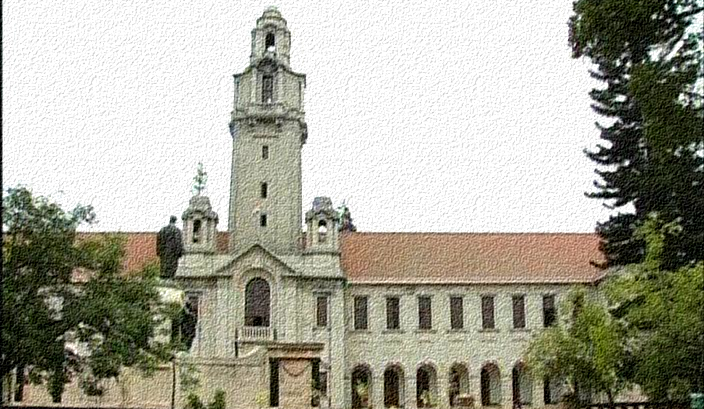Course duration: ~18 weeks
Classes: 3 /week
Total classes: 49 lectures (33 lectures by Sikdar; 16 lectures by Rishi) + 5 days allotted for tests and assignments = 18 * 3 = 54 classes
Grading structure
A number of take-home assignments will be handed over in the class from time to time. The assignments are to be submitted electronically through an email to the respective instructor before the specified deadline.
There will be one mid test and one final exam. The mid test and the final exam would cover only Sikdar's syllabus. There will be no test/exam for Rishi’s part of the syllabus. Instead, you will be required to put together a grant proposal based on your own idea (related to the syllabus that Rishi covers) in the format prescribed by DBT for grant proposals (only part III, items 16–18). The number of words in the written document and its sections should follow the DBT rules. You will be required to submit this written grant proposal, and defend it in the classroom through a presentation. Evaluation will be based on scientific, writing and presentation aspects, although the scientific part will carry the most weightage.
Assignments: 25% (Sikdar's assignments: 15% and Rishi's assignments: 10%)
Mid test: 25%
Grant proposal defended through a presentation: 25%
Final exam: 25%
Honor code
You will be expected to maintain the highest levels of academic and scientific integrity. Especially given the interdisciplinary nature of the course, close exchange of ideas among yourselves is encouraged. However, any material submitted for grading (assignments, test, summaries of research papers and grant proposal) must be your own work. Further, copying any material (including those from the web) without proper citation is considered as plagiarism, and is strictly prohibited from being part of any of the submitted material. Any material (including ideas) taken from anywhere must have appropriate citations. Finally, in the assignments and the proposal, what we are looking for are individuality and innovativeness — your opinions, your ideas and your analyses, not repetitions of somebody else’s! For instance, do not reproduce any material verbatim from any source, even if the source is cited. Concordantly, in the process of completing the assignments and the final proposal, remember that you are taking this course only because you want to learn from the lectures and assignments; follow that in letter and spirit! Let learning be the goal, not completion of the assignments by hook or crook (AKA copying from the web or a friend)! Any deviations from any of these principles will result in an F grade. Do NOT expect any lenience if you violate the honor code in any manner whatsoever.
Lectures by S.K. Sikdar
1. Introduction
Passive properties of membranes
2. Voltage across cell membrane- Nernst Equation
3. Cell membrane as resistors and capacitors
4. Membrane as RC circuit elements, Membrane time constant and space constant
5. Cable equations and passive propagation of an electrical impulse-1
6. Cable equations and passive propagation of an electrical impulse-2
Active properties of membranes
7. Voltage gated ion channels and voltage clamp technique
8. Hodgkin-Huxley equations-1
9. Hodgkin-Huxley equations-2
10. Hodgkin-Huxley equations-3 (gating current, Boltzmann Distribution)
11. Hodgkin-Huxley equations-4 (Steady state activation and Inactivation)
12. Action potential reconstruction using HH equations
13. Propagation of Action potential
Ion channel structure and function
14. Voltage sensing in ion channels-1
15. Voltage sensing in ion channels-2
16. Ionic permeation-1
17. Ionic permeation-2 (permeability ratios, constant field equation, GHK current equation)
18. Ionic permeation-3 (permeability ratios, constant field equation, GHK current equation)
19. Inactivation of voltage gated ion channels
20. Types of voltage gated ion channels
Synaptic transmission
21. Synaptic transmission at the neuromuscular junction
22. Quantal hypothesis-1
23. Quantal hypothesis-2
24. Exocytosis-1
25. Exocytosis-2
26. Exocytosis-3
Structure-function aspects of ligand gated ion channels
27. Ligand gated ion channels
28. Types of ligand gated ion channels
Electrophysiology and imaging techniques
29. Patch-clamp technique-1
30. Patch-clamp technique-2
31. Single ion channel kinetics- basics (random variable, probability density function, exponential pdfs).
32. Microbiochemistry of single ion channels
33. Calcium measurements in neurons, confocal imaging
Lectures by Rishikesh Narayanan
Dendritic physiology
34. Basic dendritic physiology
35. Active dendritic properties
36. Dendritic ion channels and their distributions
Synaptic plasticity
37. Synaptic plasticity: Historical perspective, learning and memory
38. Short-term synaptic plasticity
39. Long-term potentiation: Basic properties
40. Long-term potentiation: Induction
41. Long-term synaptic plasticity: Bidirectionality
42. Expression of long-term potentiation and depression
43. Molecular mechanisms behind postsynaptic expression of synaptic plasticity
44. Molecular mechanisms behind presynaptic expression of synaptic plasticity
Intrinsic and structural plasticity
45. Intrinsic plasticity: Basics
46. Intrinsic plasticity: Mechanisms
47. Structural plasticity
Plasticity and neurological disorders
48. Neurological disorders and plasticity
49. Open questions and spillover material

